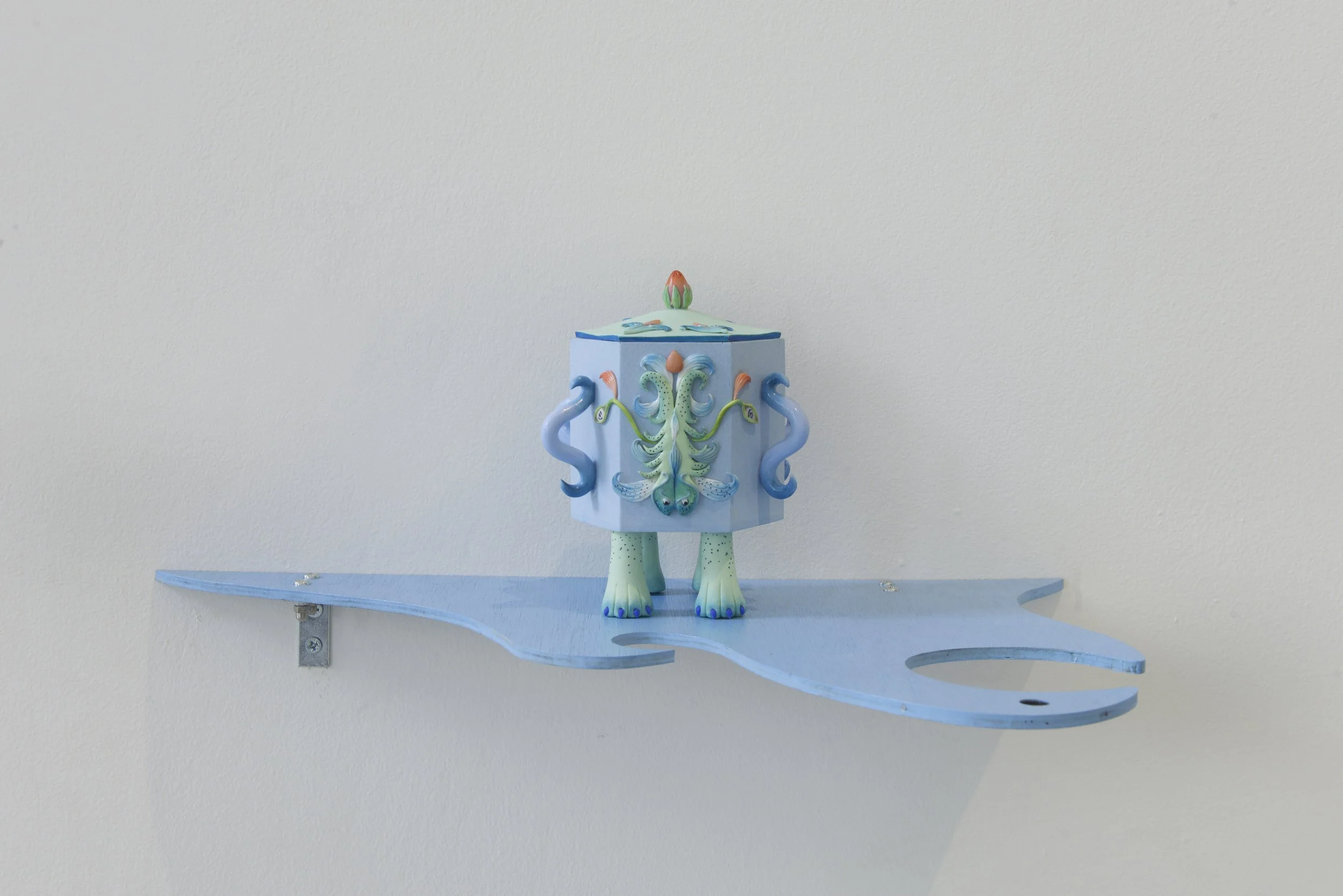Ornamental Mythologies: Solo Show at Edinburgh Printmakers September 2022
Edinburgh Printmakers presents the first solo show in Scotland of London-based artist and Edinburgh College of Art graduate Hannah Lim, with work spanning print, drawing, installation and sculpture. The artists’ work explores parts of her cultural identity, as a woman of mixed Singaporean and British heritage: she explores the relationship between these two cultures, and looks to how this has been reflected historically in furniture design, objects and architecture.
This has come to focus largely on the 18th-century trend of ‘Chinoiserie’, through which elements of Chinese design and culture were recreated and imitated in relation to European aesthetics and tastes. Lim’s work attempts to reclaim and re-imagine this practice in a more conscientious and culturally appropriate way. Her sculptures often draw inspiration from specific cultural styles or processes, with both ornamental and functional designs blended together in her large and small-scale works.
Speaking on her work artist Hannah Lim said: "As a person of mixed Singaporean and British heritage both my research and practice has come to engage with the colonial connotations of the relationship between the East and the West. These connotations are most evident in themes such as Orientalism and its relationship to Chinoiserie; an 18th century aesthetic trend in which elements of Chinese design were recreated in relation to European aesthetics and tastes. I attempt to re-imagine and reclaim ideas and designs associated with Chinoiserie, which have in the past had problematic colonial undertones. Cultural designs are shared as opposed to appropriated, it is no longer about one culture being moulded to the demands of another."






There are two primary areas of research underpinning the work developed for the exhibition: the first centered around animism, both Lim’s larger furniture-like works and smaller ceramic works have a level of anthropomorphism creating a fascination for the artist in the notion of living objects. Lim has subsequently explored a range of Chinese literature focused on enchanted creatures and objects, and mythical storytelling, including the ‘Classics of Mountains and Seas’ and Pu Song Ling’s ‘Tales of a Chinese Studio’. She has attempted to interpret and respond to these texts, which are often coded with philosophical and cultural meanings, by developing a practice of sculptural storytelling, which explores her own journey of identity searching.
More recently Lim has been interpreting and merging imagery, motifs and stories from Medieval and Chinese bestiaries and mythology. The cross-over of ideas, creatures and anthropomorphism that exists in these Chinese and Medieval bestiaries has been a point of fascination for Lim, intrigued by this shared desire to understand and give meaning to these real and imagined ‘beasts’. This avenue of research ultimately evolved from exploring her Chinese-Singaporean family’s relationship with Christianity and how that has impacted her understanding and exposure to certain aspects of Chinese culture; overtime evolving into something more playful and peculiar.
A second research thread has been Lim’s examination of the ‘ornamental’ nature of her work, referencing the feminist theory of Anne Annlin Cheng outlined in her text ‘Ornamentalism’. Cheng explores the historic portrayal of East/ South East Asian femininity and personhood as something associated with ornamental language, aesthetics, objects and technology. Through developing an understanding of Cheng’s ‘Ornamentalism’ Lim has been able to examine the role of the ‘ornament’ within her own work. Combined with her reading of Cheng, Lim’s use of colour has been influenced by David Batchelor’s book ‘Chromophobia’, which argues that a fear of colour permeates much of Western thinking, with colour associated with femininity and the Other. Thus for the artist, the over-‘ornamentalisation’ or flamboyance of her work has become a way of pushing against fixed notions of identity and race that are often a point of confusion and struggle for those who are ‘mixed race’.


